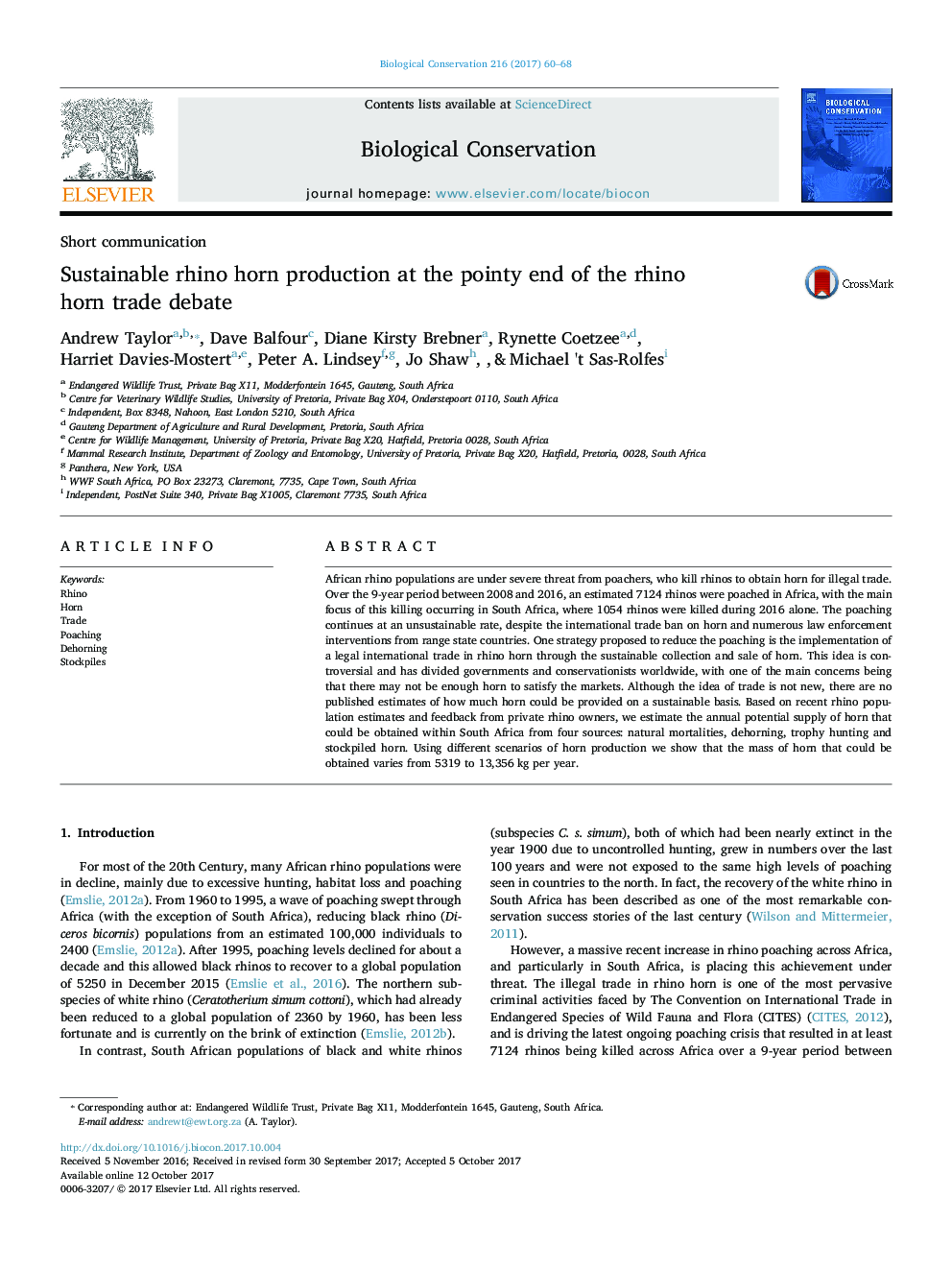| Article ID | Journal | Published Year | Pages | File Type |
|---|---|---|---|---|
| 5742901 | Biological Conservation | 2017 | 9 Pages |
â¢African rhinos are facing high rates of poaching that is threatening their survival.â¢Conventional legal protection and law enforcement are insufficient at currents levels of effort and efficiency.â¢Legal trade in rhino horn has been proposed but is controversial.â¢Annual horn production in South Africa is estimated at 5319-13,356 kg.â¢Further research is necessary to assess the likely outcomes of legalising trade.
African rhino populations are under severe threat from poachers, who kill rhinos to obtain horn for illegal trade. Over the 9-year period between 2008 and 2016, an estimated 7124 rhinos were poached in Africa, with the main focus of this killing occurring in South Africa, where 1054 rhinos were killed during 2016 alone. The poaching continues at an unsustainable rate, despite the international trade ban on horn and numerous law enforcement interventions from range state countries. One strategy proposed to reduce the poaching is the implementation of a legal international trade in rhino horn through the sustainable collection and sale of horn. This idea is controversial and has divided governments and conservationists worldwide, with one of the main concerns being that there may not be enough horn to satisfy the markets. Although the idea of trade is not new, there are no published estimates of how much horn could be provided on a sustainable basis. Based on recent rhino population estimates and feedback from private rhino owners, we estimate the annual potential supply of horn that could be obtained within South Africa from four sources: natural mortalities, dehorning, trophy hunting and stockpiled horn. Using different scenarios of horn production we show that the mass of horn that could be obtained varies from 5319 to 13,356Â kg per year.
